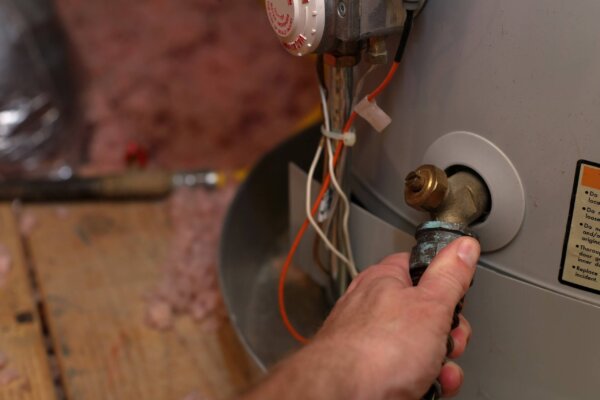A Guide to Maintaining Your Sump Pump
Sump pumps are devices used in basements and similar building areas to remove excess water that could lead to flooding. Depending on the specific needs of your home, sump pumps can be relatively inexpensive or can cost thousands of dollars. In the case of the latter, it is imperative to maximize the lifespan of your unit, but even in the case of the former, it is crucial to ensure that your sump pump works as well as it can when you need it. With that in mind, let us explore the actions that you may want to take on a monthly, quarterly, and annual basis to keep your pump running well and to lower your total cost of ownership.
Monthly Sump Pump Inspection
One of the most common questions related to residential sump pumps is whether or not a monthly inspection is required, and the answer is that it depends. Let us start by saying that at least a cursory examination each month is not a bad idea in order to catch any obvious issues as soon as possible. The exception is if you use your sump pump to dispose of water from a washing machine. If you do, then it is highly recommended that you clean the pump screen and the inlet opening, and once you have done that, you might as well perform all of the steps outlined for quarterly upkeep since the unit is unplugged and removed.
Quarterly Sump Pump Maintenance
At the bare minimum, you will want to perform routine maintenance on your sump pump every three months. Furthermore, you should set up your maintenance schedule so that you are performing maintenance in advance of heavy periods of use. You can schedule a professional technician to perform the quarterly maintenance, and we absolutely recommend that to any homeowner who does not feel comfortable working with this equipment. That said, the quarterly upkeep is not too involved. Most homeowners can do it themselves and can then call in a pro if they discover a problem.
Annual Professional Maintenance
No matter how comfortable you are with your sump pump, we highly recommend scheduling a licensed plumber to perform the annual maintenance. As we will discuss below, the annual maintenance is a bit more involved, and it provides you peace of mind that a plumber has signed off on your system.
Prepare the Pump for Routine Maintenance
When you perform a cursory inspection, such as each month, it is fine to keep the sump pump plugged in and in place. However, whenever you are going to handle the pump, you should first unplug the unit. You can then remove the pump from the basin, which is also referred to as a pit. We like to wrap the pump in plastic and then set it aside in a clean and safe place.
Clean the Sump Basin and Inlet
Empty the basin of any standing water. There may be debris in the basin, and depending on where you are emptying the basin, you may want to use a screen or another filter to block the debris. Once the basin is empty of most of the water, remove as much of the debris as you can and dispose of it. You can then rinse out the basin and wipe it out with a cleaning rag. You should also check the inlet and clear away any matter that has accumulated on it.
Examine the Sump Pump for Corrosion or Other Signs of Damage
The next step is to clean the sump pump itself. While you are cleaning it, examine the unit for any potential defects and any signs of rust or corrosion. If you do notice a crack or another flaw, you may need to call in a plumber to assess it. If you find rust or corrosion, your next step will depend on the amount of damage and the age of the sump pump. Minor accumulate can be removed with a brush and an acidic cleaner. However, be mindful that rust and corrosion can clog the system, so if the accumulation is significant and/or this is an older sump pump, it may be time to replace it.
Check the Alarms if Applicable
Not all sump pumps need an alarm, and if yours does not have one, then you can simply skip ahead. Furthermore, if you are doing quarterly maintenance as opposed to the more extensive once-a-year maintenance, you can skip ahead to checking the backup power source. Your sump pump may have a low-water alarm and/or a high-water alarm, and you should test them both per the manual.
Lubricate Unsealed Bearings
Sump pumps with sealed bearings do not need lubrication, and you can skip to the next step. If you are unsure, check the owner’s manual. If your bearings do need lubrication, make sure to use the recommended oil or grease as indicated in the manual.
Inspect the Sump Pump Discharge Pipe
Fill a 5-gallon bucket with water. Reinstall the sump pump into the basin. Empty the contents of the bucket into the basin. Observe the entire action of the float switch. The switch should travel its entire range without binding, and it should turn the sump pump on and off at the appropriate times. Once the sump pump has appropriately turned off, inspect the pump discharge pipe. Ensure that it is not obstructed, such as by dirt or vegetation. You must also ensure that the pipe is draining fully. If it is not, the inner obstruction must be cleared because any standing water could rupture the pipe during winter.
Check the Backup Power Source
A backup power source may not be relevant to your particular setup. In areas prone to extreme weather conditions, power outages are more common, and backup power sources are used. If you have a backup power source, this is a good time to ensure that the sump pump can run on it. To do so, enable the battery, and repeat the step above involving the 5 gallons of water.
Inspect the Cover
Ensure that everything is in place, and clean up your work area. If everything is in order, it is time to put the lid back and to move on to the next project. Take a moment to assess the lid and to look for any imperfections, and, lastly, ensure that it fits into the basin with a snug seal.
Your Sump Pump Experts in Sacramento
Crystal Blue Plumbing, Heating and Air is a locally owned and operated company that has served Sacramento and the surrounding areas since 1976. In addition to sump pumps, our licensed plumbers specialize in rooter services, drain repair, pipe repair, camera inspections, toilets, showers, tankless water heaters, standard water heaters, garbage disposals, and sewer repair. Our team also includes licensed HVAC technicians who can install, service, and repair all manner of ducted and ductless heating and cooling equipment, and we have IAQ experts who specialize in ventilation, air filtration, and air purification. Call or contact us online to learn more about these services or to book an appointment.








